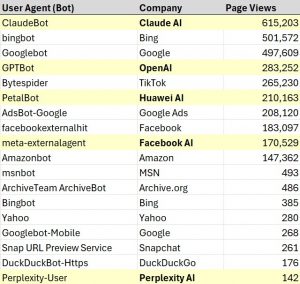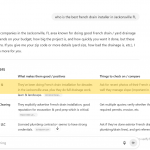Up in their ivory tower, Google’s just cooked up what they seem to think are a pair of small changes. But out here in the real world, we’re about to face a mess. They just turned Google Maps into HomeAdvisor AND are giving you less value for your Local Service Ads (LSA) dollar.
Let’s rip the Band-Aid off, then go over some ways you can salvage a win from each of these changes.
1. The “Have AI Get Prices” Button
Google just turned your business into a line item on a price comparison list with this new feature they’re trialing. It’s appearing in some areas and for some searches, but there’s a high probability this becomes a standard feature soon.
What it looks like
A new blue button now appears under the map-pack: “Have AI Get Prices.”
How this likely works
- Customer taps
- Google’s bot calls or texts you and your competitors looking for pricing info
- You have just moments to blindly name a price or be left out
- Google compiles the data and delivers it via text or email to the customer
What we expect it to look like from the business’ side
Let’s say someone searches for “shower repair in Austin.” Instead of calling you, they tap the button.
- Google’s AI sends your business a message (via call, text, or chat) asking for a price quote based on the user’s request.
- You’ll get a short message like: “A customer in your area is looking for a price to repair a leaking shower. Please reply with an estimate.”
- You won’t know much. Most likely you’ll have no photos, no call, no way to ask questions. Just a vague request and a tight window to answer.
It’s starting to sound a lot like HomeAdvisor, but with even less interaction with the client. It’s turning you into a commodity.
Why it feels like a gut punch
- You’re in the middle of a job.
- You have no idea what the problem ACTUALLY looks like.
- If you ghost the bot, it instantly serves the job to the two other guys who answered in 11 seconds.
It’s HomeAdvisor-style race-to-the-bottom
Week 1: Everyone quotes real prices.
Week 2: The clown low-balling by $200 wins every lead.
Week 3: Margins are gone and you hate your life.
Week 4: The clown is broke and so are you.
How to win anyway (do this now)
- Build a response plan
Prepare some fast, flexible “starting at” responses that give customers something to compare, without locking you into a price. These can be saved as quick replies or text snippets on your phone.
Snippet 2: “Drippy faucet fixes usually run $109 and up. Same-day available.”
Snippet 3: “Water heater replacement starts at $1,299. Includes haul-away of old heater.”
- Make sure someone answers the AI
You need someone who can respond fast. That can be your office admin, your cousin who’s helping part-time, or a dedicated answering service. Give them your pricing sheet and let them reply to AI quote requests instantly while you’re on the job. It’s actually more affordable than most people think.
We recommend Professional Answering Service. We’ve worked with them before and can get you preferential rates if you want to give them a shot. - Close the upsell in the driveway
These quotes are just your foot in the door. The real money comes when you’re face-to-face with the homeowner. When presented with a Goldilocks style list of options, a large percentage will choose the better, more-profitable option. That’s your paycheck, so don’t leave it on the table.
Set this up by Friday and the bot becomes your $0 receptionist.
2. Green “Guaranteed” Badge Is Now A Blue “Verified” Badge
Google killed the green checkmark and the $2,000 refund promise in October. No longer do you get the guarantee that came with your LSA campaign.
What you still have
-
- Same top-of-page LSA placement.
- Same background checks.
- Nearly the same trust, but now in millennial blue.
How to Turn This Into a Win
- Screenshot your new blue badge.
- Text your recent customers:
“Hey John! We just went Google Verified 🔥 Quick 20-second favor: tap here to leave us a review?”
[Link straight to your Google review form]
- Add one line to every email, invoice, and homepage:
“Google Verified + OUR Fix-It-Free Promise”
Here’s the truth:
- These tools are built for customers, not for your convenience.
- Ignoring them doesn’t make THEM go away…just YOU.
- Playing along (smartly) can still put money in your pocket.
So prep your price snippets. Get someone on quote duty. Show off that shiny blue badge. You don’t have to be the cheapest, you just have to be the fastest to show up and the best at following through.
Do that, and the robot doesn’t replace you, it routes the job straight to you.

















